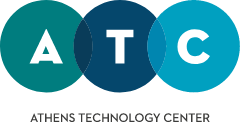Article by Kostas Vrachnos, International Business Development Manager of Athens Technology Center
For several years, Artificial Intelligence (AI) has played a significant role in journalism. The global survey, “Generating Change”, reveals AI as the third wave of technological transformation in journalism. The first wave involved the shift online, digitalization of tools, and the move to mobile. The second wave was marked by the advent of social media, influencing content creation, consumption, and competition, with technology platforms becoming integral to journalism infrastructure, emphasizing the role of the user.
In the past year, the introduction of Generative AI (genAI) has not only accelerated these ongoing trends but has also introduced new disruptions. GenAI is reshaping news organizations, transforming content creation, streamlining operations, and enhancing user engagement. The question arises: How are news organizations evolving their ‘traditional’ AI and addressing the unique challenges posed by genAI?

Current applications of AI in the news industry
Spanning newsgathering, news production, and news distribution, these areas encompass all stages of content creation, from ideation to publishing.
Newsgathering
AI applications play a pivotal role in assisting newsrooms with the collection of materials from diverse sources, contributing to a data-driven production cycle where editorial teams can better understand audience interests. Key aspects include:
- Utilizing AI tools for automated transcription, extracting text from images, and structuring data after collection.
- Implementing AI applications capable of sifting through extensive data sets and identifying patterns, such as data mining.
- Leveraging AI to uncover audience interests, identify trending topics, and discover news stories by analyzing data from various sources.
Beyond text automation and trend detection, the survey highlighted additional applications of AI technologies that streamline routine processes. This includes tasks previously handled manually or through lengthy processes, such as data classification and content organization. Examples cited include tag generation, notification services, chatbots, and language models facilitating automated responses and data extraction.
News Production
AI proves to be a valuable asset in content creation, especially at a detailed level. The advent of publicly accessible Generative AI (genAI) technologies has introduced both new possibilities and challenges in leveraging AI for content creation, as evident in the survey responses.
Approximately 90% of respondents acknowledged the use of AI technologies in news distribution, employing various applications such as fact-checking, proofreading, natural language processing (NLP), trend analysis, and generating summaries and code using genAI technologies. For example, NLP applications play a crucial role in factual claim-checking, identifying and cross-referencing claims with previously fact-checked information. Additionally, reverse-image search is employed as a verification tool.
Newsrooms are actively exploring and implementing genAI technologies in content production tasks, encompassing activities such as generating summaries, crafting headlines, visual storytelling, creating targeted newsletters, and assessing diverse data sources.
News Distribution
Approximately 80% of survey respondents indicated the utilization of AI technologies in news distribution, a slightly smaller percentage compared to production; however, the diversity of use cases was extensive. The primary goal of employing AI in distribution is to enhance audience reach and engagement. News distribution emerged as the most frequently cited area impacted by AI technologies in the newsroom, with 20% of respondents identifying it as one of the most affected areas.
Examples provided by respondents included the use of personalization and recommendation systems to precisely match content with interested audiences, or conversely, tailoring content for specific mediums or audiences. Speech-to-text technology is another AI application employed to optimize content for different mediums, such as converting text to audio.
AI-powered social media distribution tools were also highlighted for optimizing content scheduling on social platforms. Additionally, respondents mentioned leveraging chatbots to create personalized experiences and achieve quicker response rates.
Last but not least, recognizing the significance of content visibility in digital searches, AI-driven SEO tools were emphasized as valuable for newsrooms to enhance discoverability and gain insights into audience interests.
Check the survey’s key highlights in the following video!

Why do newsrooms adopt AI?
While the integration of AI applications holds the promise of streamlining journalistic work, we need to uncover the motivations driving respondents to employ AI. Over half of the surveyed newsrooms identified increasing efficiency and enhancing productivity as the fundamental objectives guiding their adoption of AI. As highlighted, their goal is to automate monotonous and repetitive tasks, ultimately streamlining workflows and enabling journalists to focus on ‘more creative, relevant, and innovative work’.
Content personalization and automation
Some respondents highlighted AI’s capability to personalize news content and optimize its distribution. This involves tailoring the home stream for readers, incorporating AI functionalities in content distribution, and employing machine learning for personalized metered paywalls. The objective is to elevate the user experience and provide tailored content.
In fact, prominent media outlets like BBC and Bloomberg are utilizing AI for news article publication. Bloomberg’s Cyborg program, for instance, scrutinizes financial reports and produces news stories, incorporating relevant facts and figures.
Efficiency and Quality
AI streamlines routine tasks, freeing up journalists to focus on in-depth articles. It also enables news organizations to create audience-centric content by leveraging AI insights into customer preferences.
Furthermore, AI contributes to content consistency and quality by analyzing data and identifying patterns, ensuring a uniform style and tone. This fosters reader trust, increasing loyalty and engagement. A great example is the one of Reuters, which uses AI algorithms to analyze vast data, identifying successful content patterns. This empowers journalists with AI-generated recommendations and insights during content creation, enhancing overall quality and resonance with the audience.
Streamlining operations
- Effective Trend Recognition: AI adeptly identifies patterns and emerging trends within extensive datasets, assisting journalists in foreseeing potential market movements and gaining valuable insights. Bloomberg’s use of AI to evaluate the creditworthiness of companies exemplifies its prowess in trend identification.
- Bias Reduction and Task Automation: AI plays a crucial role in identifying and mitigating biases in news articles, ensuring impartiality. The New York Times utilizes AI to automate tasks like transcription and data analysis, thereby liberating journalists’ time for more meaningful work.
Text summarization and generation
AI-driven technologies for text summarization and generation emerged as valuable assets for newsrooms. This involves leveraging generative language models to create summaries, titles, and push messages for articles.
Fact-checking and disinformation analysis
Numerous respondents emphasized the significance of AI in countering misinformation and polarization. They cited the use of AI protocols to improve fact-checking procedures, analyze false narratives, identify hate speech, and monitor social media platforms for disinformation.

Ethical Considerations and Challenges
While the potential benefits of AI in journalism are immense, newsrooms must establish an ethical framework for utilizing AI and recognize its consequences.
- Human Oversight and Misinformation: Maintaining human oversight is crucial to ensure accuracy and reduce misinformation. AI might not detect all instances of fake news or deepfakes, emphasizing the need for human management.
- Privacy and Data Security: AI can enhance privacy and data security but may have limitations in detecting complex security threats. A multi-layered approach, combining AI with human oversight, ensures content and user data remain secure.

The need for strategy
We have seen how AI technologies are being used or explored in newsrooms in various ways across the production process. To ensure their best use, newsrooms need to develop a more strategic approach to adoption. The survey showed that many newsrooms had not yet evolved a more formal strategy. And where they had, these varied according to organizational circumstances and policies. Generally, newsrooms are adopting a more strategic approach, partly in reaction to the challenge of genAI, but this is still a fluid area and strategies have to be flexible.
Six Steps Towards an AI Strategy for News Organizations
- Stay Informed: Explore introductory trainings and innovation case study reports.
- Enhance AI Literacy: Foster a broader understanding of AI components impacting journalism across all roles, not just editorial or technical. AI literacy is essential for everyone involved in the organization.
- Assign Responsibility: Designate someone in the organization to monitor AI developments, appoint AI innovation and R&D leads, and facilitate ongoing conversations about AI within the organization.
- Test, Iterate, Repeat: Experiment with AI applications, ensuring human oversight and management. Avoid rushing into AI adoption; instead, scale gradually and consistently review the impact.
- Develop Guidelines: Create inclusive guidelines, involving all stakeholders in the process. Be open to reviewing and adapting the guidelines over time based on evolving needs and insights.
- Collaborate and Network: Engage with institutions, universities, and start-ups working in the AI field. Collaborate with other news organizations to share experiences and explore opportunities, especially with the increasing accessibility of generative AI tools.
In conclusion, the transformative potential of AI in digital newsrooms is vast, offering advantages in efficiency, consistency, scalability, personalization, and engagement. While embracing AI, news organizations must establish ethical frameworks, ensuring human oversight for accuracy and impartiality. By navigating these challenges and leveraging AI’s potential, news organizations can thrive in the evolving landscape, delivering informed, engaging, and connected content to a global audience.
Download the Generating Change Survey here
See also
- Newsroom leaders will take a more cautious approach to generative AI in 2024
- AI and journalism: What’s next?
- Generative AI in the newsroom: Tips and tactics for 2024 from Reuters, Newsquest and BBC
- How AI & Blockchain are reshaping the publishing industry






